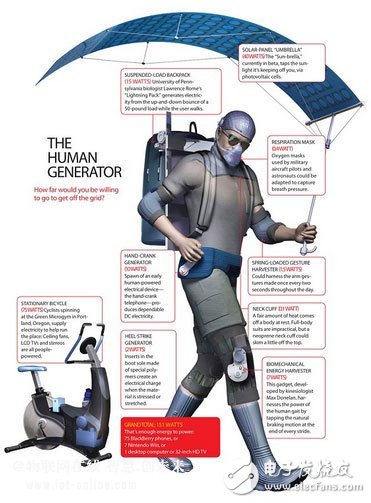In the next six years, the Internet of Things is expected to drive a large number of remote and wireless sensor nodes in the market. Gartner believes that by 2020, the number of sensor nodes installed and operating globally will reach 30 billion. Many remote sensor nodes can support industrial applications, such as factory automation, intelligent buildings, intelligent transportation systems, etc., and must rely on the small amount of power supplied by batteries or energy harvesting systems. The small amount of voltage provided by the battery or remote energy harvester can be converted with a low-power analog IC to the extent that it can satisfy most circuits. It can also be used to enhance (and sometimes linearize) weak output signals from remote sensors, as well as provide data conversion to convert analog signals into data types for use by embedded processors or controllers. In addition to remote sensor nodes, it can support a variety of applications. By 2017, the market for such parts for industrial condition monitoring will reach $300 million. It is still difficult to predict whether this $300 million in revenue will increase with the deployment of IoT nodes, or it may be included in the general expected industrial control expenditure. But we believe that another $155 million will be spent on consumer applications such as smart home monitors. In the next five to ten years, low-power wireless sensor electronics must focus on how to improve energy harvesting equipment to reduce product size and cost while increasing the power output of the device. Existing energy harvesters are bulky and cumbersome, expensive, and inefficient. The same is true for the three major environmental energy harvesters, such as solar energy, thermal gradients and vibration. Energy harvesting technology has become a mainstream market still needs to wait for a long time For researchers and product development teams, these three devices have the same contradiction: if you want to collect more energy, the area requirement of the equipment is greater, and it is always difficult to miniaturize the product. Solar, thermal, and piezoelectric vibration energy harvesters must also have specialized materials. Gartner predicts that energy harvesting technology will take 10 years to leapfrog the mainstream.
The JOMEtech Interactive Board offers a range of configurations to suit your needs. The standard configuration includes 4GB RAM and 32GB ROM, while the upgrade options provide even more power with 8GB RAM and 128GB ROM. Powered by Android 11.0, it utilizes a Quad-core ARM Cortex-A55 CPU and Mali-G52 MP2(2EE) GPU, delivering seamless performance and enhanced graphics capabilities. Additionally, Smart Interactive Board features a mini host with Windows 10.0, offering versatility and compatibility.
The JOMEtech Interactive Board incorporates low-touch high-precision writing technology, Interactive Board For Classroom allowing for smooth and fast writing experiences. With silky and beautiful lines, it replicates the feel of traditional writing instruments, providing a natural and immersive writing experience for teachers and students alike.
Interactive Boards,Smart Interactive Board,Interactive Boards For Schools,Interactive Board Panel,Interactive Board For Classroom,Interactive Monitor Jumei Video(Shenzhen)Co.,Ltd , https://www.jmsxdisplay.com
JOMEtech Interactive Board: Unleashing the Power of Interactive Learning
Experience visuals like never before with the 4K high-definition display, which showcases stunning clarity and a breakthrough in high color gamut display technology. Colors appear vivid and rich, enhancing the overall viewing experience. Interactive Boards full lamination process of the LCD panel reduces reflected light, minimizing distractions and ensuring optimal visibility in any lighting condition.